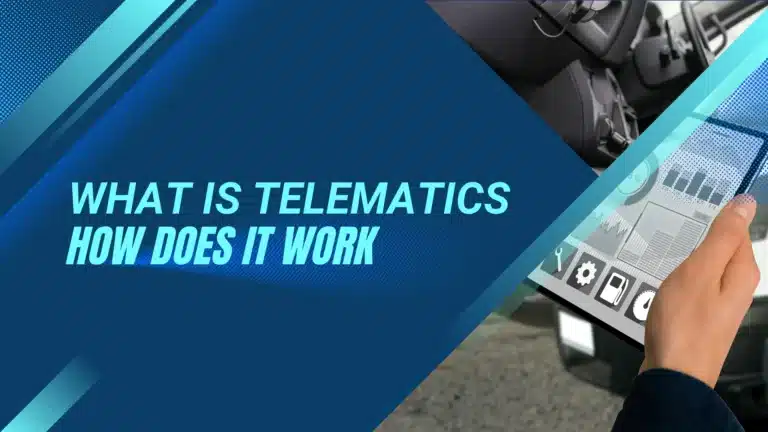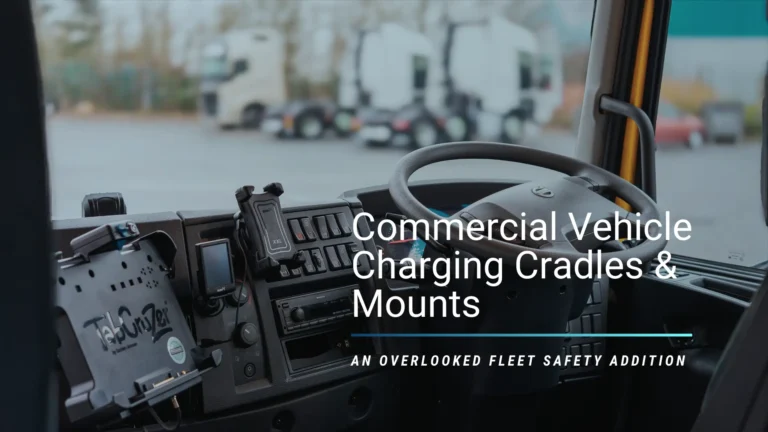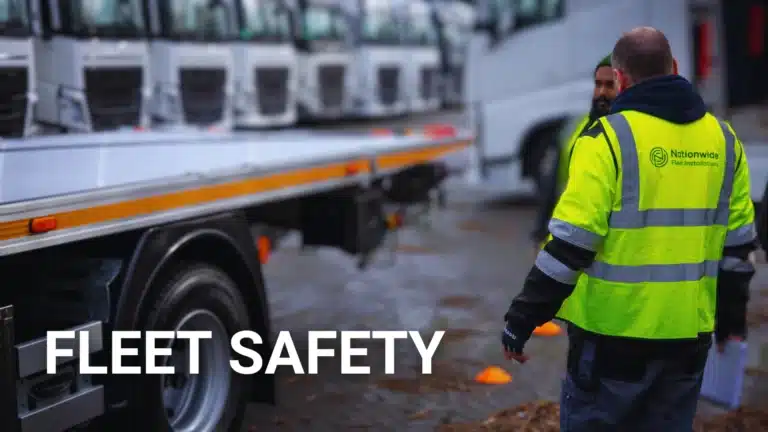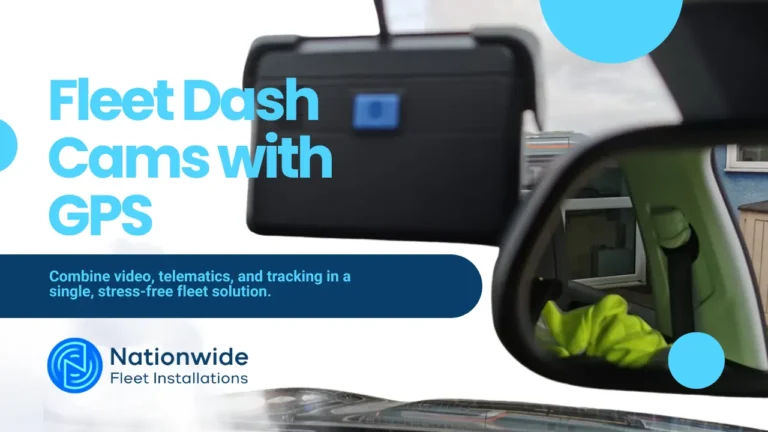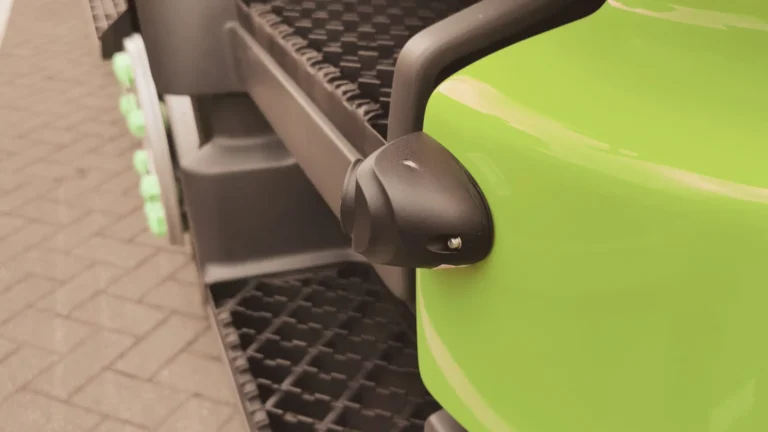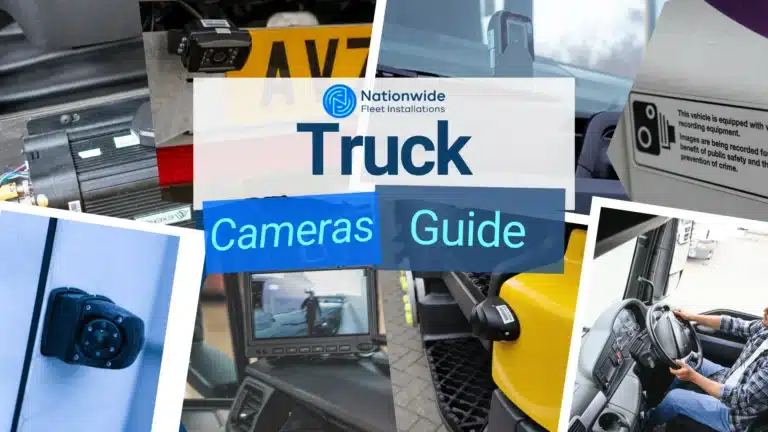Benefits Of Video Telematics
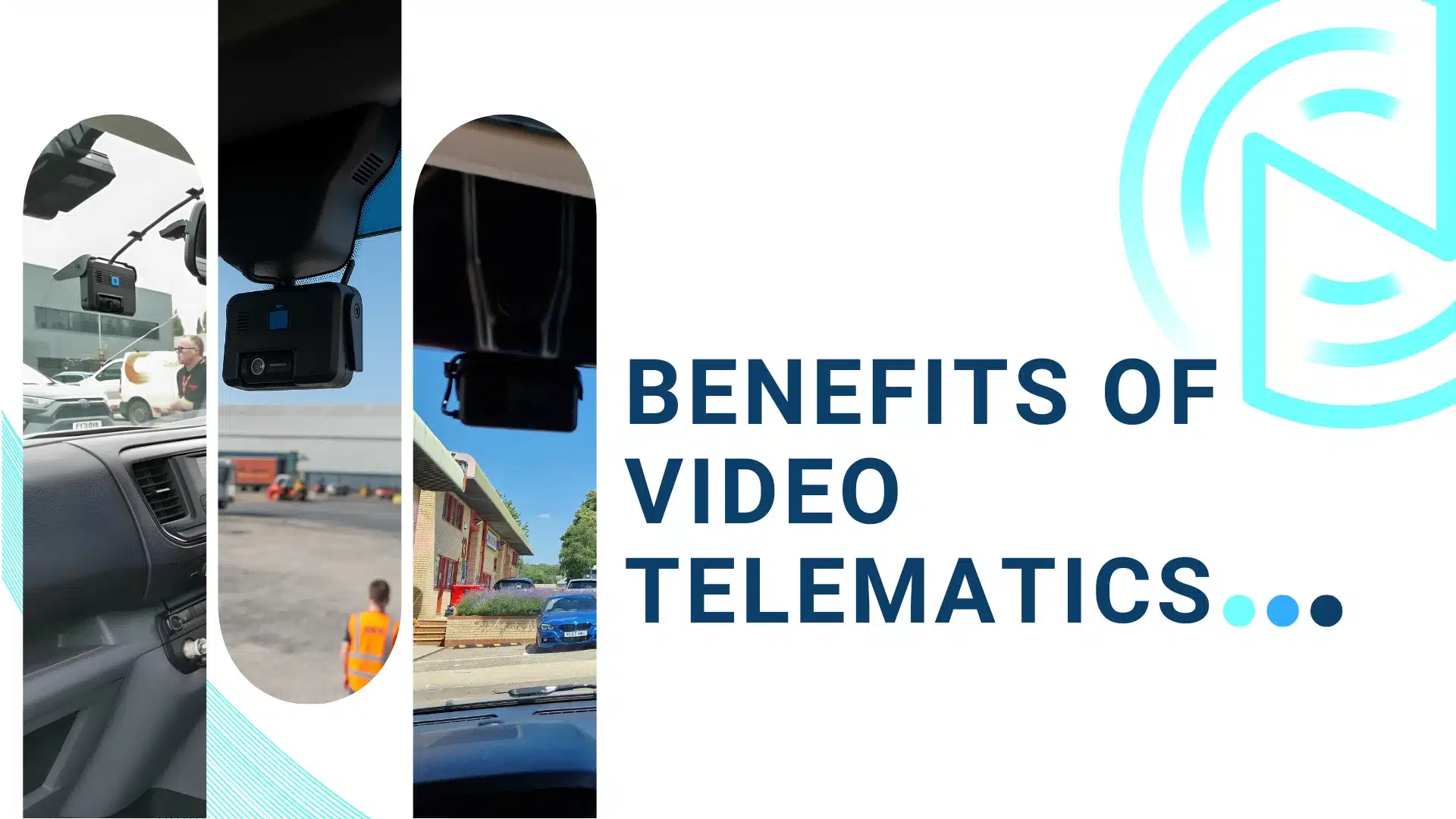
Video telematics takes the benefits of traditional telematics a step further by adding visual context. Instead of just analysing data points and vehicle metrics, fleet managers can now access actual footage showing exactly what happened and why. This means you’re not only seeing the what, but also understanding the how, including external factors like road conditions, pedestrian behaviour, and driver actions.
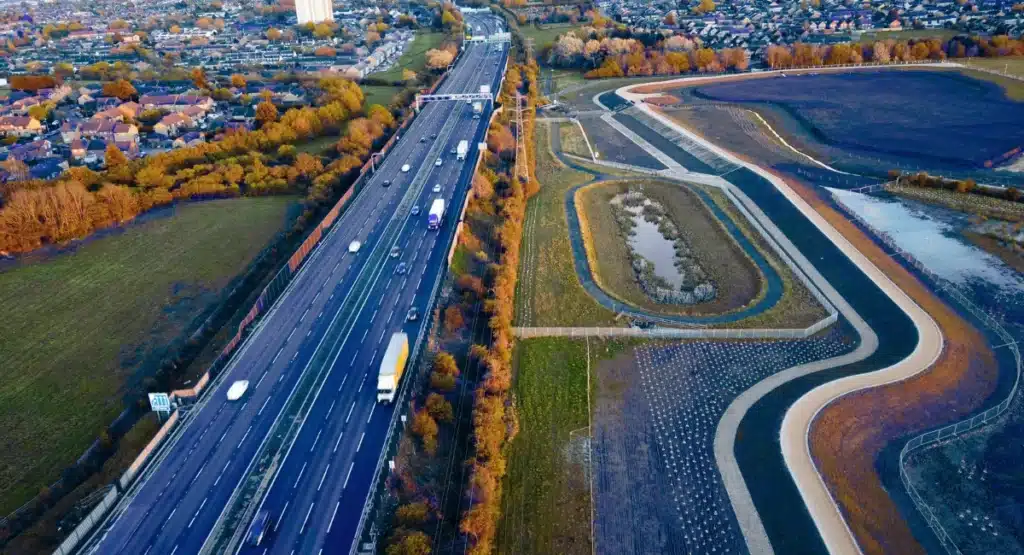
Combining Video With Data
By combining video evidence with vehicle data, video telematics provides a more complete picture of how your vehicles are used, including every incident or journey. This gives fleet managers the ability to see what’s happening, without leaving the office, and makes use of the latest in fleet technology, mobility and connectivity to improve safety, accountability, and operational control across the fleet.
Improved safety
Video telematics systems leverage emerging video and telematics technology to enhance fleet safety. By understanding more about the environment in which vehicles operate, fleet managers can gain an accurate indication of the daily risks and put plans in place to minimise these, improving the safety of operations. This includes obtaining video for driver coaching, improving driver behaviour, and monitoring key performance indicators. It’s not only about knowing what happened, but also about going beyond and understanding what caused the incident, the contributing factors, and what can be done to prevent it in the future. Research and industry experience indicate that drivers, including HGV drivers, tend to drive more safely when they know video systems are monitoring them
Respond faster with video telematics
Video telematics provides fleet managers with instant visibility into vehicle and driver activity, enabling them to respond to incidents in real-time. By combining live video, location data, and telematics insights, it transforms incident response from reactive to proactive.
Increased customer satisfaction
As video telematics becomes more prevalent, not all fleets will have this technology on board. Some may only have traditional telematics, some might only utilise fleet tracking, while others may have safety cameras or none at all. However, adopting video telematics can provide a competitive advantage by enabling more accurate estimated times of arrival (ETAs), documenting when jobs have been done, and offering video proof of events. Whether you operate your own fleet or supply technology to others, video telematics enhances accuracy in ETAs, provides proof of delivery, and offers instant access to footage when issues arise. This ultimately gives you a competitive edge and boosts customer confidence.
Brand Image
Video telematics has been proven to develop your brand image. Yes, evidence shows that HGV drivers generally drive more carefully when video monitoring is fitted. Multiple studies and industry sources confirm that the presence of in-cab cameras and video telematics systems leads to a measurable improvement in driver behaviour and a reduction in risky actions.
Sources
- University of Nottingham found that “HGV drivers drive much more safely when there are cameras in their cabs monitoring their behaviour.”
- Fleet World: “Camera-based telematics solutions are transforming fleet safety.“
By using this technology, your company can significantly reduce accidents and demonstrate a genuine commitment to safety. This proactive approach not only protects your drivers and assets but also demonstrates that your brand is committed to creating a safe working environment.

It also demonstrates that your brand is innovative, utilising the latest technologies not only to enhance safety but also to improve processes, quality of service, customer service, and lead times.
As a result, your business becomes more attractive to customers, drivers, supply chain partners, and regulators who value safety. Additionally, having a strong safety record, supported by video telematics, can help you win more tenders, as many clients and contracts prioritise working with companies that can prove their dedication to safety standards, provide regular updates, and supply visual evidence of work completed.
Reduce costs
When vehicles are driven safely and are not involved in as many accidents, it saves you money on repair costs, lowers insurance premiums, reduces vehicle downtime, and cuts down on vehicle hire costs. Video telematics can also help reduce fuel consumption, prevent costly fines, speed up insurance processing, and extend the lifespan of your vehicles, all of which contribute to even greater savings for your fleet.
Lower insurance premiums
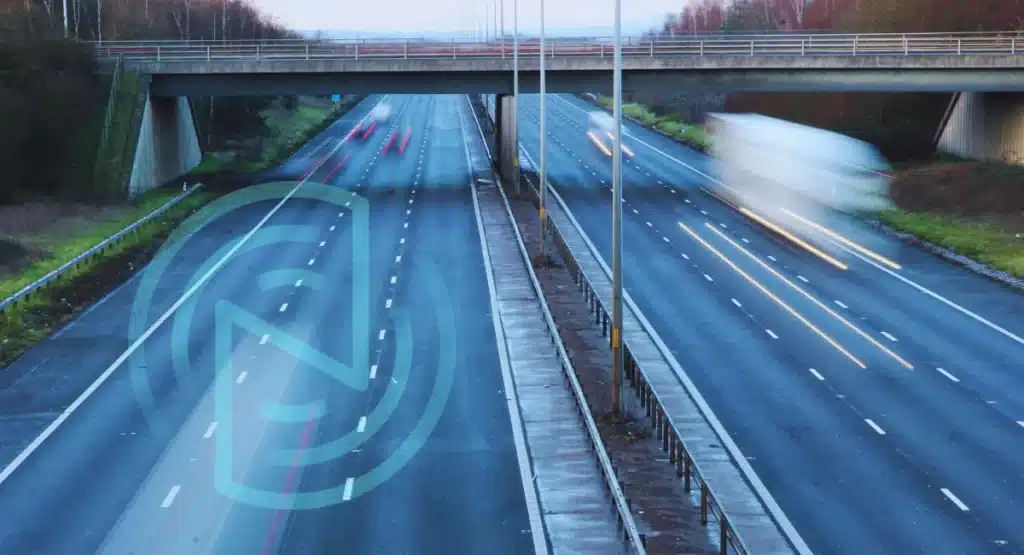
Video telematics can help insurers build a comprehensive picture of risk, enabling them to offer lower insurance premiums for fleets. By having video evidence available, it can speed up the often notoriously slow insurance claims process. Since commercial vehicles are frequently targeted by insurance fraud, video telematics helps exonerate drivers and attribute fault to the correct party. This technology is vital, as “crash for cash” scams are a costly expense for fleets. The Insurance Fraud Bureau estimates that these scams cost the UK insurance industry £340 million annually, with individual collisions potentially costing tens of thousands of pounds.
Maintenance, wear and tear
Due to the promotion of safe driving behaviour, video telematics often results in fewer incidents of harsh braking, sharp cornering, and inefficient fuel usage. Over time, this means fleet managers can expect lower maintenance costs and reduced wear and tear on vehicles. For fleets using video telematics platforms with predictive maintenance features, it’s possible to proactively address potential issues, minimise unexpected breakdowns, and optimise service scheduling. Altogether, these benefits lead to greater efficiency and smarter, data-driven decisions for fleet operations.
Help meet regulations
Video telematics solutions can play a vital role in helping fleets meet safety standards such as DVS (Direct Vision Standard), FORS (Fleet Operator Recognition Scheme), WRRR (Work Related Road Risk), and CLOCS (Construction Logistics and Community Safety). Video telematics kits typically include a combination of external and internal cameras, driver-facing cameras, blind spot cameras, sensors, and AI-driven software designed to detect vulnerable road users, eliminate blind spots, and distinguish between real moving risks, such as pedestrians or cyclists and static roadside furniture like railings or bins.
Video telematics is essential, as failure to comply with fleet regulations can lead to fines, operational disruptions, and loss of permits or operating licences. Video telematics systems support fleets with the benefits mentioned above, including protecting reputations and enabling informed decisions regarding driver training and risk management. As well as ticking the fleet compliance box.
Our speciality is ensuring that hardware is installed according to these specifications, helping customers maintain compliance and reducing the need for repeat callouts for video telematics providers. Our technicians are experienced with technical specifications and can install a wide range of compliant hardware.
Easy to integrate
One of the key advantages of video telematics systems is ease of integration into existing fleets. You don’t need to wait for new vehicles or factory-fitted systems; video telematics kits can be professionally retrofitted to both new and older vehicles, allowing you to roll out safety and compliance features across your entire fleet.
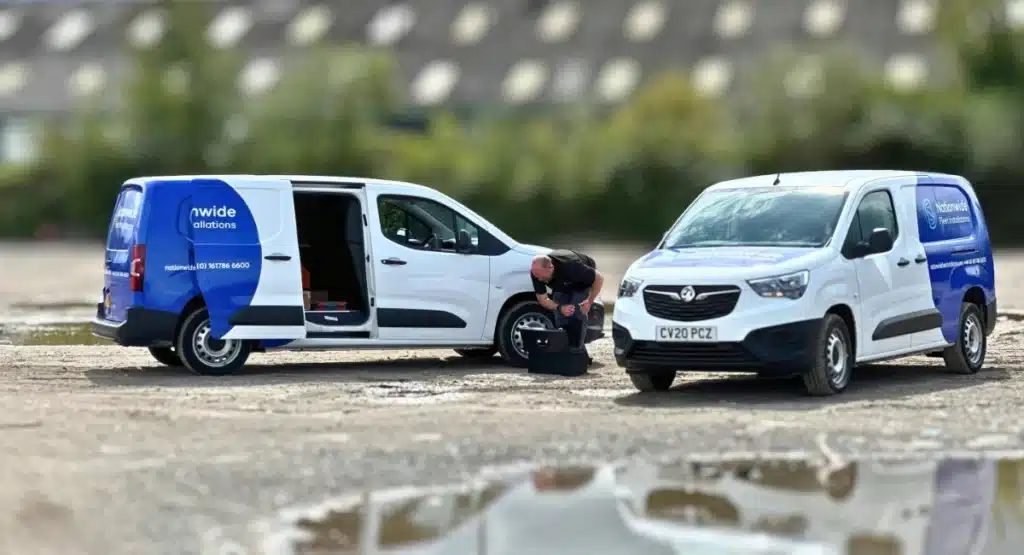
Many experienced installation companies like us specialise in fitting video telematics hardware. Working with one means you don’t have to handle the technical side yourself. Whether you’re a fleet operator or a technology provider, a professional installation partner can act as an extension of your team, handling installations across multiple locations and vehicle types.
For video telematics providers, partnering with an installation company means faster rollout to your end users, consistency in quality, and a better customer experience. For fleet operators, it means getting fully installed, working systems without disruption to your day-to-day operations.
How We Support Video Telematics Companies
Simply provide your video telematics hardware and a list of vehicles to be fitted (plus contact details for your designated staff or drivers), and our experienced team will handle the rest. We ensure that your system is installed professionally, fitted, configured, calibrated, and tested with minimal impact on your operations.
Our Installation services are designed to support businesses in multiple sectors – basically any business that runs a fleet of vehicles or offers video telematics solutions to fleet operators. This includes installations for the:
- Fleet Sector
- Public Transport
- Haulage & Transport
- Leasing and hiring
- Insurance
Geographical Coverage
Our field technicians cover the whole of the UK, making us an ideal installation partner for both UK-based providers and international video telematics companies looking to break into the UK market
Post Installation Support
After installation, we hand over to your customer/drivers and you receive reports for full transparency on how many installs we have completed. When you partner with us, we don’t just abandon you after install. We offer a full fleet management service which features service calls, repairs, upgrades and de fleeting.
Ongoing support is available for any post-install queries or service needs, and as your dedicated installation partner, we keep responsibilities clear so you always know who to contact. Our approach takes the technical and logistical headache away from you and your team, making video telematics rollouts simple and reliable.
For more information, please do not hesitate to get in touch with us.

